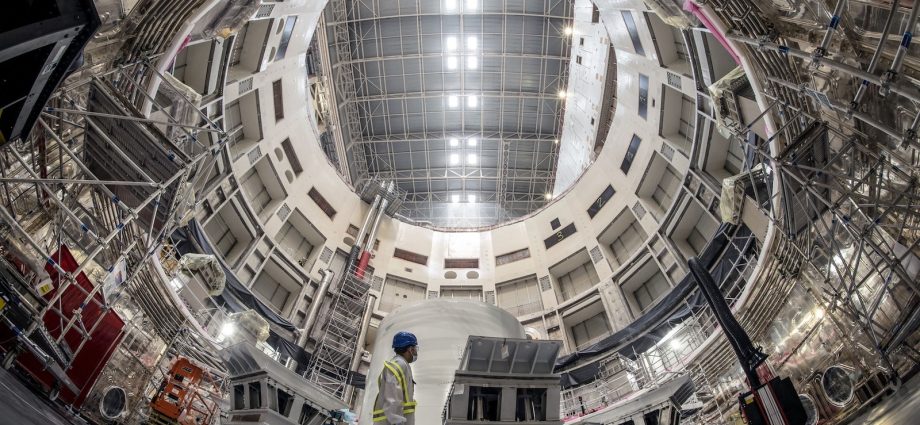This is the third and final installment of a three-part series. Read Part 1 here and Part 2 here.
The landmark successes of the EAST tokamak are propelling China into the leading position worldwide in the field of magnetic fusion.
The reactor’s advanced design, the excellence and creativity demonstrated by the EAST team and the practical orientation to solving concrete scientific and engineering problems of fusion give us reason to expect more breakthroughs in the near future.
As for now, the EAST research program appears to be determined primarily by the needs of the ITER project, in which China is an active participant. ITER, however, is a very, very slow elephant, which is practically certain to be overtaken by faster, cheaper and more sophisticated devices.
By the time it finally goes into operation, ITER will almost certainly be technologically obsolete. A masterpiece of high-tech engineering, but with a total cost variously estimated at between US$22 and $65 billion, ITER will still only be an experimental device.
If all goes well, the follow-on project of a tokamak-based prototype fusion power plant – the “DEMO” – is projected to go online in 2050. Assuming the DEMO proves to be viable, commercial plants would follow.
From my point of view, this perspective is intolerably long and costly, and would make magnetic confinement fusion virtually irrelevant to solving the world’s energy problems in the foreseeable future.

As mentioned above, China is presently working on its own large fusion power-generating tokamak, the China Fusion Engineering Test Reactor (CFETR). At first glance, the philosophy of CFETR appears to be similar to that of the ITER. But that might not be completely true, nor are significant changes ruled out.
Interesting, from my standpoint, would be the option of utilizing the CFETR as the core of a hybrid fusion-fission reactor, in which neutrons from the fusion reactions would be used to drive fission reactions in a subcritical blanket. Studies are already being made on this possibility.
In fact, fusion-fission hybrid reactors have already been the subject of extensive research in China for many years. A major advantage of such a system lies in the fact that the fusion reactor part no longer must produce a net energy surplus; the energy required for maintaining the fusion reactions would be compensated many times over by that released by the fission reactions.
Thereby the requirements for the fusion system are drastically reduced, relative to a “pure” fusion power plant. Hybrid reactors would thus provide a much nearer-term option than the ITER–DEMO scenario.
(It should be noted that, in addition to tokamaks, many other types of fusion devices might serve as the neutron sources for hybrid reactors.)
On the other hand, it is conceivable that results from China’s EAST and other experimental devices in various countries might improve the viability of the ITER and shorten the time to achieving ignition and net thermal output.
Despite being a very slow elephant and consuming a great amount of resources, ITER at the very least constitutes a platform for large-scale international cooperation on fusion science and technology, and building up a corresponding industrial base. It would not make sense to halt participation in this project.
At the same time, however, it would be wise to look toward other options for realizing fusion via the tokamak route.
I have written earlier for Asia Times about compact high-field tokamaks which utilize many times stronger magnetic fields and will benefit greatly from the emergence of high-temperature superconductors, which were not available when the ITERs magnet system was designed. Another example is the high-field spherical tokamak.
EAST operates with very different plasma parameters, but many of its results, as well as the technological accomplishments embodied in its design, are doubtless relevant to high-field devices.
In my view, the history of efforts to realize fusion using tokamaks has been shaped by an important methodological issue: the attitude taken to nonlinear self-organizing processes in magnetically-confined plasmas. That includes, among other things, their ability to concentrate energy and to structure themselves in a highly inhomogeneous manner.
I think it is fair to say that, starting from the initial calculations carried out by A D Sakharov in 1950-51, the development of tokamaks has tended to overlook or ignore self-organizing phenomena, orienting instead to the vision of achieving an essentially uniform, featureless, quiescent plasma.
The history of high-density pulsed systems, especially plasma focus and related devices, has taken a different course. [See my article on the plasma focus here].

Of course, at the time the tokamak was born, nonlinear self-organizing processes were much less well-known and understood than they are today. Only gradually has their essential role in both the successes and the failures of tokamak devices been realized.
It would make sense, instead of struggling against the plasma’s natural self-organizing tendencies, to make friends with them and learn how to exploit them in order to make viable fusion power a reality in the coming period.

